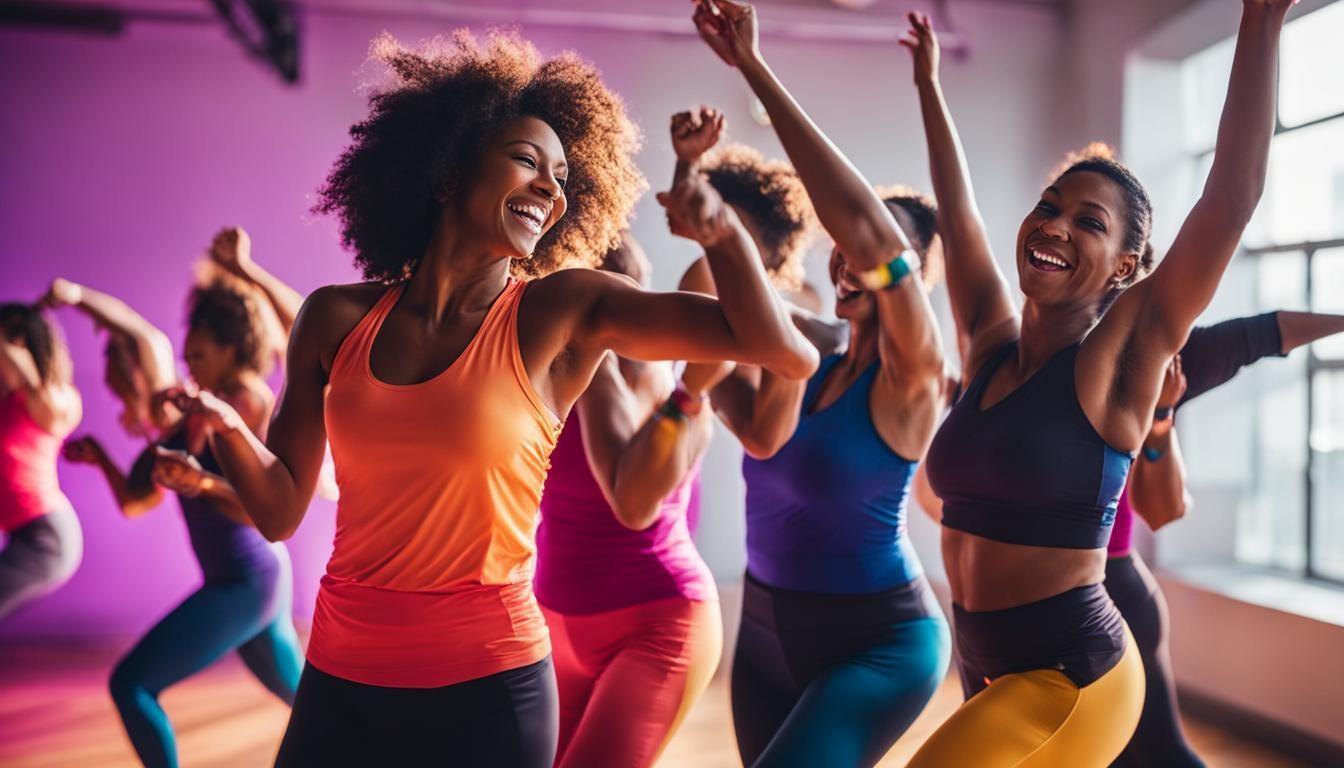
Resilience in Rhythm: How Dance Teaches Us to Bounce Back
Resilience in Rhythm: How Dance Teaches Us to Bounce Back
Dance, an age-old art form, has a profound impact on our ability to bounce back from adversity. It teaches us resilience in the most beautiful and rhythmic way, providing a unique pathway to emotional strength and personal growth. Through structured movements and emotional expression, dance offers individuals the opportunity to find solace and develop resilience.
Key Takeaways
Dance plays a significant role in fostering resilience and helping individuals bounce back from adversity.
Dance provides consistency, structure, and an emotional outlet, teaching individuals to find solace and develop resilience through movement.
Despite facing obstacles, dance can help individuals overcome adversity and find support.
Dance not only influences personal growth but also has a transformative impact on the community.
Dance serves as a therapeutic tool, allowing individuals to express and process trauma and difficult emotions.
The Role of Dance in Developing Resilience
Dance therapy for resilience
Strengthening resilience through dance
Dance offers a world of structure and consistency, especially for individuals facing unpredictability in life. It provides a predictable sequence of movements and serves as an emotional anchor.
Even individuals who may not be naturally talented in dance can find resilience through the consistency and emotional outlet that dance offers.
At the heart of fostering resilience through dance is Brazily Dance, a vibrant community where the rhythm of resilience is deeply woven into each class and program. Brazily Dance exemplifies how structured movement and emotional expression can serve as powerful tools for overcoming adversity. With a wide array of dance styles tailored to embrace all levels of experience, Brazily Dance creates a nurturing environment that encourages individuals to explore their potential, express their emotions, and build resilience. By prioritizing emotional support alongside physical training, Brazily Dance stands as a beacon for those seeking to bounce back from life's challenges through the joy and discipline of dance.
Overcoming Obstacles and Finding Support
Building resilience with dance is a transformative journey, empowering individuals to overcome obstacles and find the support they need to thrive. Despite facing challenges such as injury and financial constraints, dance can be a powerful tool for resilience.
One way individuals can overcome obstacles is by switching to nurturing studios. These studios recognize and celebrate the potential in every dancer, providing a supportive environment that fosters emotional resilience. By offering guidance, encouragement, and emotional support, these studios help individuals develop the strength to face adversity head-on.
Recognizing Potential and Fostering Growth
In nurturing studios, dancers are given the opportunity to explore their potential and grow both technically and artistically. Trained instructors provide personalized guidance and constructive feedback, helping dancers improve their skills and build resilience through continuous growth.
Moreover, these studios emphasize the importance of emotional support. They create a safe space where dancers can openly express their emotions, share their experiences, and find solace. This emotional outlet helps individuals process their challenges and build emotional resilience.
Cultivating Community and Connection
Dance communities are a vital source of support for individuals facing obstacles. These communities provide a sense of belonging, understanding, and camaraderie. They allow dancers to connect with others who share similar experiences, creating a support system that uplifts and inspires.
Through collaborative performances, group classes, and shared artistic endeavors, dancers find strength in unity. The dance community becomes a place where individuals can lean on each other during challenging times, fostering emotional resilience and providing the support needed to overcome obstacles.
Switching to nurturing studios
Recognizing individual potential
Providing emotional support
Cultivating a sense of belonging
Fostering connections within the dance community
By embracing the power of dance, individuals can effectively navigate through obstacles and build emotional resilience. Through nurturing studios and a supportive dance community, individuals are empowered to face adversity head-on and emerge stronger on the other side.
The Impact of Dance on Personal and Community Growth
Dance is not only a powerful tool for personal growth but also has a profound impact on the community. It goes beyond individual resilience and inspires others to pursue their creative endeavors. Through dance, individuals can find strength, express themselves, and connect with others in a unique and transformative way.
The Ripple Effect of Dance
When individuals experience the power of dance in their own lives, they are often inspired to share that joy and resilience with others. Many dancers become teachers, mentors, and choreographers, passing on their knowledge and creating opportunities for others to experience the transformative nature of dance. This ripple effect of dance contributes to the growth and resilience of the community as a whole.
Inspiring Creative Pursuits
Dance performances and experiences have the ability to ignite a spark of inspiration in individuals. Witnessing the grace, passion, and resilience displayed on stage can awaken dormant dreams and aspirations. The impact of dance goes beyond the performance itself, motivating individuals to pursue their own creative endeavors – whether it be in dance, music, visual arts, or any other form of artistic expression.
Building Stronger Communities
Dance brings people together, fostering a sense of unity and connection within communities. Through participation in dance classes, workshops, and performances, individuals have the opportunity to build relationships, discover commonalities, and support one another. This sense of community acts as a safety net, providing emotional support and resilience during challenging times.
Dance as a tool for resilience
Dance and resilience
The Healing Power of Dance
Dance is not only a beautiful art form but also a powerful tool for healing and promoting resilience. Through movement and expression, dance provides individuals with a unique way to process trauma and difficult emotions. It offers a nonverbal and symbolic language that allows them to work through unspeakable pain and find solace.
Resilience through movement is a key aspect of dance. The physical act of dancing helps individuals reconnect with their bodies and their present selves. As they move to the rhythm, they release tension, let go of emotional burdens, and find a sense of freedom. This embodiment of emotions provides a cathartic experience that aids in the healing process.
The Therapeutic Benefits of Dance
Dance as a tool for resilience offers numerous therapeutic benefits. Firstly, it allows individuals to express emotions that may be difficult to put into words. Through movement, they can communicate their inner turmoil, fears, and struggles, leading to a deeper level of understanding and acceptance.
Secondly, dance provides a sense of empowerment and control. In a world where trauma and adversity can make individuals feel helpless, dance gives them agency over their bodies and emotions. They have the power to choose how they move, where they direct their energy, and what emotions they express through their dance.
Thirdly, dance promotes self-care and self-compassion. By engaging in a physical activity that brings joy and fulfillment, individuals prioritize their well-being. They learn to listen to their bodies, honor their limits, and take care of themselves, fostering a sense of self-love and resilience.
The Role of Dance Communities
Within dance communities, individuals find a supportive and nurturing environment that fosters resilience. By joining dance classes or groups, they become part of a community that understands and shares their love for dance and movement.
This sense of belonging and connection is crucial for personal growth and resilience. Dance communities provide emotional support, encouragement, and a sense of unity. They offer a safe space where individuals can express themselves freely, celebrate their achievements, and find inspiration from fellow dancers.
Moreover, dance communities provide opportunities for collaboration and growth. Through shared experiences, dancers can learn from one another, exchange knowledge and skills, and challenge themselves to improve.
They also create a platform for performances and showcases, which can be transformative experiences for both the dancers and the audience.
By witnessing the power of dance, individuals are inspired to pursue their own creative endeavors, further enhancing their resilience.
Overall, dance serves as a powerful tool for healing and building resilience. Through movement and expression, it allows individuals to process trauma, reconnect with themselves, and find solace. With the support of dance communities, dancers can cultivate resilience, celebrate their strengths, and embrace the transformative power of dance.
Dance as a Catalyst for Resilience in Children
Dance and movement programs in schools play a pivotal role in nurturing resilience among children. Through the captivating allure of dance, children are provided with an avenue for transformation, enabling them to process their experiences, foster resilience, and forge a deep sense of community within the school environment.
As children immerse themselves in the world of dance, they embark on a profound journey of self-expression and self-discovery. Dance acts as a catalyst for resilience, empowering children to confront and navigate their emotions through the language of physical movement. It equips them with the tools to gracefully confront their past encounters and daily obstacles.
Moreover, dance offers children a unique opportunity to establish a strong mind-body connection. By nurturing both their physical and mental well-being, dance instills in them a comprehensive approach to resilience. The rhythmic movements and coordinated steps inherent in dance cultivate traits such as focus, discipline, and self-awareness—all essential components for resilience in the face of life's challenges.
Beyond individual growth, dance programs within schools also cultivate a profound sense of community among children. Through collaborative exercises and performances, children develop a shared purpose and mutual support. They learn the value of teamwork, the importance of trust, and the art of fostering relationships that serve as pillars of resilience.
In essence, dance serves as a beacon of resilience for children, illuminating their path towards emotional strength, community connection, and a profound understanding of their inner selves.
Dance therapy for resilience in children encompasses not only the physical aspects of movement but also the emotional and social benefits that come with it. Dance programs in schools present children with an avenue for creative expression, where they can freely communicate their thoughts and emotions. This fosters emotional intelligence, communication skills, and self-confidence, all of which are integral to resilience.
The Benefits of Dance for Resilience in Children:
Enhanced self-expression and emotional processing through movement.
Improved focus, discipline, and self-awareness.
Fostered mind-body connection and holistic well-being.
Developed collaboration, teamwork, and relationship-building skills.
Promoted emotional intelligence, communication, and self-confidence.
In summary, dance serves as a catalyst for resilience in children by providing them with an avenue to process their experiences, build physical and emotional strength, and foster a sense of community. By harnessing the power of movement, dance programs in schools lay the foundation for children to develop resilience from a young age, equipping them with the skills needed to face life's challenges head-on.
The Resilience-Building Power of Dance/Movement Therapy
Dance/movement therapy is a Whole Person approach to working with trauma and building resilience. It harnesses the transformative power of movement and dance to help individuals navigate their emotional landscape and foster resilience.
Through dance/movement therapy, individuals are provided with a safe and supportive environment to express and embody their suffering, hopes, and emotions when words fail. This form of therapy recognizes that movement is a powerful tool for self-expression and healing.
Dance and movement have a profound impact on resilience. The arts, including dance, facilitate posttraumatic growth by allowing individuals to process their experiences in a nonverbal and symbolic way. The physicality of dance helps improve immune functioning and reduce stress, enabling individuals to respond better to future challenges.
In dance/movement therapy sessions, individuals engage in various exercises and techniques that promote resilience through movement. These may include improvisation, guided movement exploration, and choreographed routines that encourage self-expression and emotional release. The therapeutic relationship formed between the individual and the therapist provides a foundation of trust and support.
The Benefits of Dance/Movement Therapy
Resilience through Movement: Dance/movement therapy allows individuals to tap into their inner strength and develop resilience through physical expression. By connecting mind, body, and emotions, individuals can build resilience and find ways to navigate life's challenges.
Building Resilience with Dance: Dance provides individuals with a sense of purpose, structure, and consistency. By engaging in regular dance practices, individuals develop discipline, perseverance, and a positive outlook, which are key elements of resilience.
Dance/movement therapy goes beyond traditional talk therapy by incorporating the expressive and healing power of movement. It offers individuals an alternative way of processing trauma, finding meaning, and creating coherence in their lives.
By integrating the body, mind, and spirit, dance/movement therapy helps individuals build resilience and develop a greater sense of self-awareness and empowerment. Through movement and dance, individuals can unlock their potential for personal growth and find strength amidst life's challenges.
Conclusion
Dance is a powerful tool for building resilience in individuals. It offers a unique combination of structure, consistency, emotional expression, and community support, all of which contribute to nurturing resilience. Through the art of dance, individuals can develop the ability to bounce back from adversity with grace and strength, finding solace and strength through movement.
While dance may not be the path to resilience for everyone, it plays a crucial role for many in fostering personal growth and emotional well-being. The consistency and structure that dance provides offer a sense of stability and predictability, serving as a reliable anchor in the face of unpredictability. By embracing the emotional outlet that dance offers, individuals can harness their emotions and transform them into resilience.
Furthermore, dance builds resilience through the sense of community it fosters. In nurturing dance studios and through collaborations with fellow dancers, individuals find support and encouragement, helping them overcome obstacles and grow stronger. As dance permeates personal lives, it also has a transformative impact on the community as a whole, inspiring others to pursue creative endeavors and spreading the power of resilience.
In conclusion, dance holds the key to resilience in rhythm. With its myriad of benefits, it empowers individuals to face challenges, process trauma, and rebuild their lives. By embracing the power of dance, individuals can bounce back from adversity, finding strength, joy, and a sense of purpose through the expressive art form.
At Brazily Dance, the journey of resilience is interwoven with the joy and discipline of dance, offering a unique approach to bouncing back from life's challenges. It's a place where every step on the dance floor is a step towards emotional strength and resilience, inviting everyone to embrace the healing rhythms of dance and discover the resilience within.
In embracing dance, we unlock a powerful tool for navigating life's challenges, transforming adversity into a dance of resilience. Let Brazily Dance guide you through this rhythmic journey to resilience, where each movement is a testament to the enduring power of the human spirit to overcome and thrive. Discover the offerings at Brazily Dance and let dance be the rhythm that guides you back to joy and strength in the face of adversity."
Brazily Fitness Blog

Resilience in Rhythm: How Dance Teaches Us to Bounce Back
Resilience in Rhythm: How Dance Teaches Us to Bounce Back
Dance, an age-old art form, has a profound impact on our ability to bounce back from adversity. It teaches us resilience in the most beautiful and rhythmic way, providing a unique pathway to emotional strength and personal growth. Through structured movements and emotional expression, dance offers individuals the opportunity to find solace and develop resilience.
Key Takeaways
Dance plays a significant role in fostering resilience and helping individuals bounce back from adversity.
Dance provides consistency, structure, and an emotional outlet, teaching individuals to find solace and develop resilience through movement.
Despite facing obstacles, dance can help individuals overcome adversity and find support.
Dance not only influences personal growth but also has a transformative impact on the community.
Dance serves as a therapeutic tool, allowing individuals to express and process trauma and difficult emotions.
The Role of Dance in Developing Resilience
Dance therapy for resilience
Strengthening resilience through dance
Dance offers a world of structure and consistency, especially for individuals facing unpredictability in life. It provides a predictable sequence of movements and serves as an emotional anchor.
Even individuals who may not be naturally talented in dance can find resilience through the consistency and emotional outlet that dance offers.
At the heart of fostering resilience through dance is Brazily Dance, a vibrant community where the rhythm of resilience is deeply woven into each class and program. Brazily Dance exemplifies how structured movement and emotional expression can serve as powerful tools for overcoming adversity. With a wide array of dance styles tailored to embrace all levels of experience, Brazily Dance creates a nurturing environment that encourages individuals to explore their potential, express their emotions, and build resilience. By prioritizing emotional support alongside physical training, Brazily Dance stands as a beacon for those seeking to bounce back from life's challenges through the joy and discipline of dance.
Overcoming Obstacles and Finding Support
Building resilience with dance is a transformative journey, empowering individuals to overcome obstacles and find the support they need to thrive. Despite facing challenges such as injury and financial constraints, dance can be a powerful tool for resilience.
One way individuals can overcome obstacles is by switching to nurturing studios. These studios recognize and celebrate the potential in every dancer, providing a supportive environment that fosters emotional resilience. By offering guidance, encouragement, and emotional support, these studios help individuals develop the strength to face adversity head-on.
Recognizing Potential and Fostering Growth
In nurturing studios, dancers are given the opportunity to explore their potential and grow both technically and artistically. Trained instructors provide personalized guidance and constructive feedback, helping dancers improve their skills and build resilience through continuous growth.
Moreover, these studios emphasize the importance of emotional support. They create a safe space where dancers can openly express their emotions, share their experiences, and find solace. This emotional outlet helps individuals process their challenges and build emotional resilience.
Cultivating Community and Connection
Dance communities are a vital source of support for individuals facing obstacles. These communities provide a sense of belonging, understanding, and camaraderie. They allow dancers to connect with others who share similar experiences, creating a support system that uplifts and inspires.
Through collaborative performances, group classes, and shared artistic endeavors, dancers find strength in unity. The dance community becomes a place where individuals can lean on each other during challenging times, fostering emotional resilience and providing the support needed to overcome obstacles.
Switching to nurturing studios
Recognizing individual potential
Providing emotional support
Cultivating a sense of belonging
Fostering connections within the dance community
By embracing the power of dance, individuals can effectively navigate through obstacles and build emotional resilience. Through nurturing studios and a supportive dance community, individuals are empowered to face adversity head-on and emerge stronger on the other side.
The Impact of Dance on Personal and Community Growth
Dance is not only a powerful tool for personal growth but also has a profound impact on the community. It goes beyond individual resilience and inspires others to pursue their creative endeavors. Through dance, individuals can find strength, express themselves, and connect with others in a unique and transformative way.
The Ripple Effect of Dance
When individuals experience the power of dance in their own lives, they are often inspired to share that joy and resilience with others. Many dancers become teachers, mentors, and choreographers, passing on their knowledge and creating opportunities for others to experience the transformative nature of dance. This ripple effect of dance contributes to the growth and resilience of the community as a whole.
Inspiring Creative Pursuits
Dance performances and experiences have the ability to ignite a spark of inspiration in individuals. Witnessing the grace, passion, and resilience displayed on stage can awaken dormant dreams and aspirations. The impact of dance goes beyond the performance itself, motivating individuals to pursue their own creative endeavors – whether it be in dance, music, visual arts, or any other form of artistic expression.
Building Stronger Communities
Dance brings people together, fostering a sense of unity and connection within communities. Through participation in dance classes, workshops, and performances, individuals have the opportunity to build relationships, discover commonalities, and support one another. This sense of community acts as a safety net, providing emotional support and resilience during challenging times.
Dance as a tool for resilience
Dance and resilience
The Healing Power of Dance
Dance is not only a beautiful art form but also a powerful tool for healing and promoting resilience. Through movement and expression, dance provides individuals with a unique way to process trauma and difficult emotions. It offers a nonverbal and symbolic language that allows them to work through unspeakable pain and find solace.
Resilience through movement is a key aspect of dance. The physical act of dancing helps individuals reconnect with their bodies and their present selves. As they move to the rhythm, they release tension, let go of emotional burdens, and find a sense of freedom. This embodiment of emotions provides a cathartic experience that aids in the healing process.
The Therapeutic Benefits of Dance
Dance as a tool for resilience offers numerous therapeutic benefits. Firstly, it allows individuals to express emotions that may be difficult to put into words. Through movement, they can communicate their inner turmoil, fears, and struggles, leading to a deeper level of understanding and acceptance.
Secondly, dance provides a sense of empowerment and control. In a world where trauma and adversity can make individuals feel helpless, dance gives them agency over their bodies and emotions. They have the power to choose how they move, where they direct their energy, and what emotions they express through their dance.
Thirdly, dance promotes self-care and self-compassion. By engaging in a physical activity that brings joy and fulfillment, individuals prioritize their well-being. They learn to listen to their bodies, honor their limits, and take care of themselves, fostering a sense of self-love and resilience.
The Role of Dance Communities
Within dance communities, individuals find a supportive and nurturing environment that fosters resilience. By joining dance classes or groups, they become part of a community that understands and shares their love for dance and movement.
This sense of belonging and connection is crucial for personal growth and resilience. Dance communities provide emotional support, encouragement, and a sense of unity. They offer a safe space where individuals can express themselves freely, celebrate their achievements, and find inspiration from fellow dancers.
Moreover, dance communities provide opportunities for collaboration and growth. Through shared experiences, dancers can learn from one another, exchange knowledge and skills, and challenge themselves to improve.
They also create a platform for performances and showcases, which can be transformative experiences for both the dancers and the audience.
By witnessing the power of dance, individuals are inspired to pursue their own creative endeavors, further enhancing their resilience.
Overall, dance serves as a powerful tool for healing and building resilience. Through movement and expression, it allows individuals to process trauma, reconnect with themselves, and find solace. With the support of dance communities, dancers can cultivate resilience, celebrate their strengths, and embrace the transformative power of dance.
Dance as a Catalyst for Resilience in Children
Dance and movement programs in schools play a pivotal role in nurturing resilience among children. Through the captivating allure of dance, children are provided with an avenue for transformation, enabling them to process their experiences, foster resilience, and forge a deep sense of community within the school environment.
As children immerse themselves in the world of dance, they embark on a profound journey of self-expression and self-discovery. Dance acts as a catalyst for resilience, empowering children to confront and navigate their emotions through the language of physical movement. It equips them with the tools to gracefully confront their past encounters and daily obstacles.
Moreover, dance offers children a unique opportunity to establish a strong mind-body connection. By nurturing both their physical and mental well-being, dance instills in them a comprehensive approach to resilience. The rhythmic movements and coordinated steps inherent in dance cultivate traits such as focus, discipline, and self-awareness—all essential components for resilience in the face of life's challenges.
Beyond individual growth, dance programs within schools also cultivate a profound sense of community among children. Through collaborative exercises and performances, children develop a shared purpose and mutual support. They learn the value of teamwork, the importance of trust, and the art of fostering relationships that serve as pillars of resilience.
In essence, dance serves as a beacon of resilience for children, illuminating their path towards emotional strength, community connection, and a profound understanding of their inner selves.
Dance therapy for resilience in children encompasses not only the physical aspects of movement but also the emotional and social benefits that come with it. Dance programs in schools present children with an avenue for creative expression, where they can freely communicate their thoughts and emotions. This fosters emotional intelligence, communication skills, and self-confidence, all of which are integral to resilience.
The Benefits of Dance for Resilience in Children:
Enhanced self-expression and emotional processing through movement.
Improved focus, discipline, and self-awareness.
Fostered mind-body connection and holistic well-being.
Developed collaboration, teamwork, and relationship-building skills.
Promoted emotional intelligence, communication, and self-confidence.
In summary, dance serves as a catalyst for resilience in children by providing them with an avenue to process their experiences, build physical and emotional strength, and foster a sense of community. By harnessing the power of movement, dance programs in schools lay the foundation for children to develop resilience from a young age, equipping them with the skills needed to face life's challenges head-on.
The Resilience-Building Power of Dance/Movement Therapy
Dance/movement therapy is a Whole Person approach to working with trauma and building resilience. It harnesses the transformative power of movement and dance to help individuals navigate their emotional landscape and foster resilience.
Through dance/movement therapy, individuals are provided with a safe and supportive environment to express and embody their suffering, hopes, and emotions when words fail. This form of therapy recognizes that movement is a powerful tool for self-expression and healing.
Dance and movement have a profound impact on resilience. The arts, including dance, facilitate posttraumatic growth by allowing individuals to process their experiences in a nonverbal and symbolic way. The physicality of dance helps improve immune functioning and reduce stress, enabling individuals to respond better to future challenges.
In dance/movement therapy sessions, individuals engage in various exercises and techniques that promote resilience through movement. These may include improvisation, guided movement exploration, and choreographed routines that encourage self-expression and emotional release. The therapeutic relationship formed between the individual and the therapist provides a foundation of trust and support.
The Benefits of Dance/Movement Therapy
Resilience through Movement: Dance/movement therapy allows individuals to tap into their inner strength and develop resilience through physical expression. By connecting mind, body, and emotions, individuals can build resilience and find ways to navigate life's challenges.
Building Resilience with Dance: Dance provides individuals with a sense of purpose, structure, and consistency. By engaging in regular dance practices, individuals develop discipline, perseverance, and a positive outlook, which are key elements of resilience.
Dance/movement therapy goes beyond traditional talk therapy by incorporating the expressive and healing power of movement. It offers individuals an alternative way of processing trauma, finding meaning, and creating coherence in their lives.
By integrating the body, mind, and spirit, dance/movement therapy helps individuals build resilience and develop a greater sense of self-awareness and empowerment. Through movement and dance, individuals can unlock their potential for personal growth and find strength amidst life's challenges.
Conclusion
Dance is a powerful tool for building resilience in individuals. It offers a unique combination of structure, consistency, emotional expression, and community support, all of which contribute to nurturing resilience. Through the art of dance, individuals can develop the ability to bounce back from adversity with grace and strength, finding solace and strength through movement.
While dance may not be the path to resilience for everyone, it plays a crucial role for many in fostering personal growth and emotional well-being. The consistency and structure that dance provides offer a sense of stability and predictability, serving as a reliable anchor in the face of unpredictability. By embracing the emotional outlet that dance offers, individuals can harness their emotions and transform them into resilience.
Furthermore, dance builds resilience through the sense of community it fosters. In nurturing dance studios and through collaborations with fellow dancers, individuals find support and encouragement, helping them overcome obstacles and grow stronger. As dance permeates personal lives, it also has a transformative impact on the community as a whole, inspiring others to pursue creative endeavors and spreading the power of resilience.
In conclusion, dance holds the key to resilience in rhythm. With its myriad of benefits, it empowers individuals to face challenges, process trauma, and rebuild their lives. By embracing the power of dance, individuals can bounce back from adversity, finding strength, joy, and a sense of purpose through the expressive art form.
At Brazily Dance, the journey of resilience is interwoven with the joy and discipline of dance, offering a unique approach to bouncing back from life's challenges. It's a place where every step on the dance floor is a step towards emotional strength and resilience, inviting everyone to embrace the healing rhythms of dance and discover the resilience within.
In embracing dance, we unlock a powerful tool for navigating life's challenges, transforming adversity into a dance of resilience. Let Brazily Dance guide you through this rhythmic journey to resilience, where each movement is a testament to the enduring power of the human spirit to overcome and thrive. Discover the offerings at Brazily Dance and let dance be the rhythm that guides you back to joy and strength in the face of adversity."






